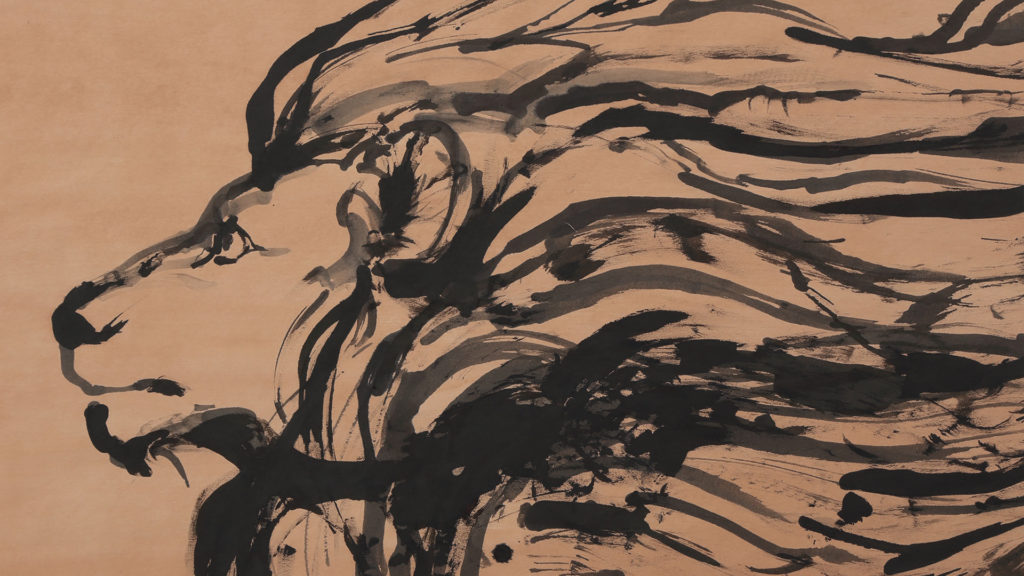I met Kaoru Goto, a Bokuga (An ink painting) artist, about ten years ago. At that time, she was a Kirie (The art of paper cutting) artist. Most of her works are motifs of animals and large trees, and it seems like they are chatting happily.

In this interview, I could ask her why she started working as a Bokuga artist and what will be in her future.
The Interviewee: Why did you start painting with ink?
Kaoru Goto: I used to draw drafts using ink for kirie, even drawing on copy papers. One day, I visited an art museum and saw Fusuma-e (An ink painting on a sliding screen) of Kaii Higashiyama. He used dozens of Fusuma (A sliding screen) for that work. His work moved me, and I could not sleep that night. After the sun came up, I started to paint a large tree on three Fusuma in my room. I looked around the room for a significant paper, and there was Fusuma. It took about one month to finish it up because I was painting in between regular works, but it was amusing.
Also, around the same time, I started to rent a space in a calligrapher studio. She gave me chances to use big brushes for live paintings and advised what paper to use. She made me realize how deep ink painting can be.
I was used to learning by myself, and learning from an expert made me see what I was doing from different angles. Painting’s expression can change from brushes and papers and not just my skills. That’s what’s interesting about it.
Using brush and ink was drawing for drafts, but it changed to the most exciting thing. There are many things I can learn about, and this is a big part of why I am painting with ink now.
TI: I see you paint trees a lot these days. Why is that?
KG: I love Yakushima island and started drawing trees on Yakushima island. Every tree has different appearances and energies. That catches my attention and makes me curious about them. I absorb those in me and adapt to my trees. My trees are not just a portrayal of trees, and I am drawing what I felt and got from the trees.
TI: You are making papers at home. What made you do that?
KG: It’s a waste to throw away the papers I made a mistake in painting. Once, I visited a Japanese Washi studio and learned the process and tried making a paper. Making one Washi takes lots of procedure and time. Making a mistake is instant, but after learning how they make Washi, I couldn’t throw them into the garbage. I could not use them anymore, but I just kept them in my closet. I had a chance to talk to the Washi artisan and told him about it, and then he said: “Why don’t you dissolve the papers and remake it?”. After asking how I can do it at home, I tried it. It was so different from the original, but it became quite an interesting paper.

TI: What do you see in the future?
KG: I am not sure yet. I like animals and trees I paint; at the same time as being, it feels like something is missing. But I don’t know what is missing at the moment. That is why I am painting many different things. Maybe, after 100 paintings, I can see something. There is no promise for that, but the process is fascinating as well.
At last…
She had exhibitions in Fukuoka and Tokyo as a Kirie artist and actively engaged. Hearing she has not been doing Kirie for a few years, I was wondering why. I learned that she got to ink painting after following her interests and pursuing a missing piece in her work.
I cannot wait to see her work in the future and find what she found.




Comments